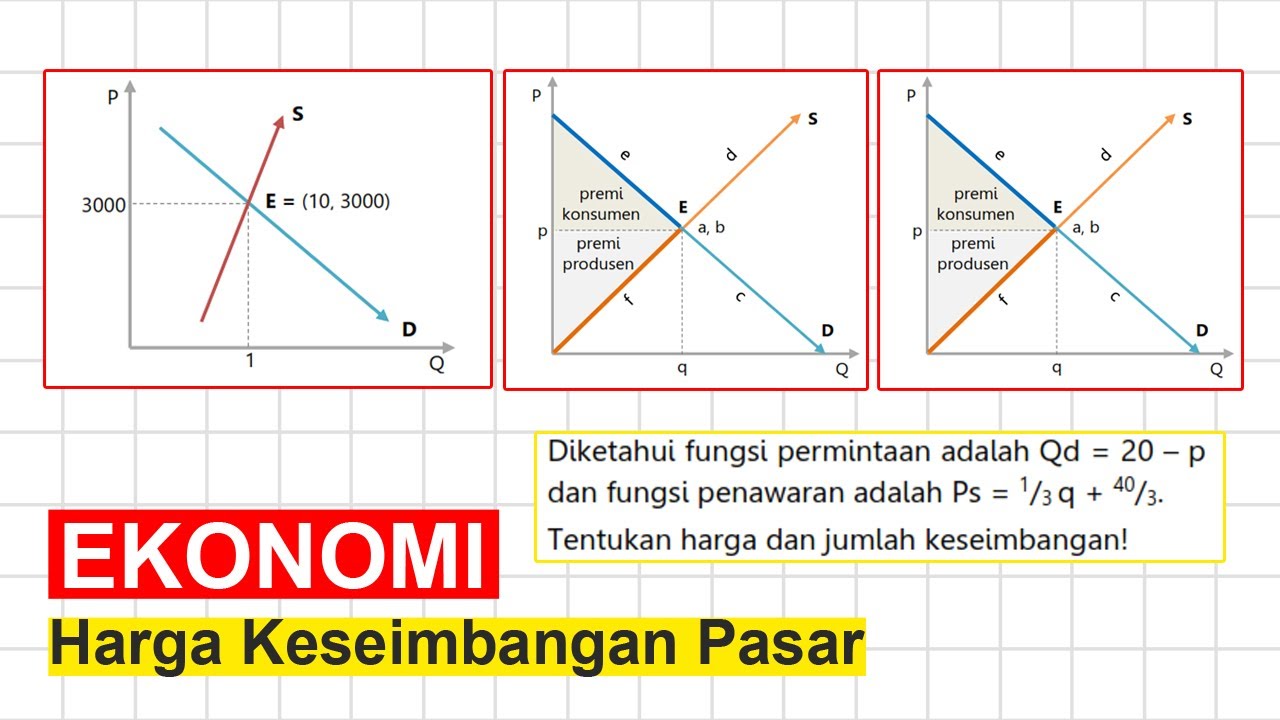A2/IB Why is there a Vertical Discontinuity with Kinked Demand?
Summary
TLDRThis video explains the concept of vertical discontinuity in King demand analysis, focusing on the relationship between demand and marginal revenue curves. It highlights how the King demand curve is made up of two parts—blue and red demand curves—each with a corresponding marginal revenue curve. The key concept is the vertical gap that appears at the kink, where the red marginal revenue curve starts without intersecting the blue one. This discontinuity results in the marginal cost curve always intersecting at a specific price point, P1, offering a simple yet clear understanding of King demand behavior without delving into complex math.
Takeaways
- 😀 The King demand curve consists of two parts: a blue demand curve and a red demand curve.
- 😀 The corresponding marginal revenue curve for each demand curve is twice as steep as the original demand curve.
- 😀 There is a vertical discontinuity between the marginal revenue curves of the two demand curves at quantity Q1.
- 😀 The blue demand curve is used until the kink point, after which the red demand curve takes over.
- 😀 The transition from the blue to the red demand curve creates a gap in the marginal revenue curves.
- 😀 The red marginal revenue curve starts at Q1, but it does not connect with the blue marginal revenue curve.
- 😀 The discontinuity is represented by a vertical gap, which does not allow the curves to intersect at Q1.
- 😀 No matter how the curves are drawn, a vertical gap will always exist between the marginal revenue curves.
- 😀 When drawing the marginal cost curve through the gap, it always intersects at price P1.
- 😀 The goal is to understand the vertical gap and the implications of King demand analysis without using complex mathematics.
Q & A
What is the concept of vertical discontinuity in King demand analysis?
-Vertical discontinuity in King demand analysis refers to the gap that appears between two marginal revenue curves (blue and red) when transitioning from one demand curve to another at a specific quantity level (q1). This occurs because the marginal revenue curves do not intersect at q1, creating a vertical gap.
How do the demand curves relate to their corresponding marginal revenue curves?
-Each demand curve (blue and red) has a corresponding marginal revenue curve. The marginal revenue curve is always twice as steep as the associated demand curve, indicating how revenue changes with respect to quantity sold.
Why are the marginal revenue curves for the two demand curves different in terms of steepness?
-The marginal revenue curve is steeper than the demand curve because it represents the rate at which revenue changes with respect to quantity. In King demand analysis, it is specifically twice as steep to reflect the different rate of change for total revenue at varying quantities.
What happens at the kink point in the King demand analysis?
-At the kink point (where the blue demand curve ends and the red demand curve begins), the marginal revenue curve also changes. The blue MR curve is replaced by the red MR curve, and a vertical gap appears between them, indicating the discontinuity.
Why does a vertical gap appear between the blue and red marginal revenue curves?
-A vertical gap appears because the two marginal revenue curves do not intersect at the kink point (q1). The red MR curve starts at a different point than the blue MR curve, creating a discontinuity between them.
What does the vertical line represent in the diagram?
-The vertical line in the diagram represents the gap between the blue and red marginal revenue curves. It connects the point where the red MR curve begins, showing the discontinuity at the level of q1.
How does the vertical discontinuity affect marginal cost curves?
-The vertical discontinuity affects marginal cost curves by influencing the price and quantity at which the market equilibrium is reached. The gap between the MR curves results in a different price (P1) being established in relation to the marginal cost curve.
Is the vertical discontinuity unique to King demand analysis?
-Yes, the vertical discontinuity is a characteristic specific to King demand analysis, where two distinct demand curves are used, and the marginal revenue curves do not connect at the kink point.
What is the significance of the level of quantity q1 in the King demand analysis?
-The level of quantity q1 is crucial because it marks the point where the blue demand curve transitions to the red demand curve. At this point, the marginal revenue curve changes, leading to the vertical gap or discontinuity.
How can someone verify the presence of the vertical gap when drawing the curves?
-To verify the presence of the vertical gap, one can draw both the blue and red demand curves, along with their corresponding marginal revenue curves. By extending the curves fully, it will become apparent that there is always a vertical gap between the two MR curves at the kink point (q1).
Outlines

Cette section est réservée aux utilisateurs payants. Améliorez votre compte pour accéder à cette section.
Améliorer maintenantMindmap

Cette section est réservée aux utilisateurs payants. Améliorez votre compte pour accéder à cette section.
Améliorer maintenantKeywords

Cette section est réservée aux utilisateurs payants. Améliorez votre compte pour accéder à cette section.
Améliorer maintenantHighlights

Cette section est réservée aux utilisateurs payants. Améliorez votre compte pour accéder à cette section.
Améliorer maintenantTranscripts

Cette section est réservée aux utilisateurs payants. Améliorez votre compte pour accéder à cette section.
Améliorer maintenantVoir Plus de Vidéos Connexes

Micro Unit 4 Summary- Imperfect Competition

Explaining Price Elasticity of Demand and Total Revenue - A Level and IB Economics

Introduction to Resource Markets and Marginal Revenue Product

Introduction to labor markets | Microeconomics | Khan Academy

Understanding the Demand Curve: Shifts and Consumer Surplus

Harga Keseimbangan Pasar / Ekuilibrium Pasar - EKONOMI
5.0 / 5 (0 votes)
